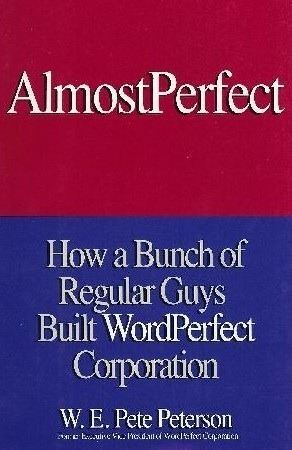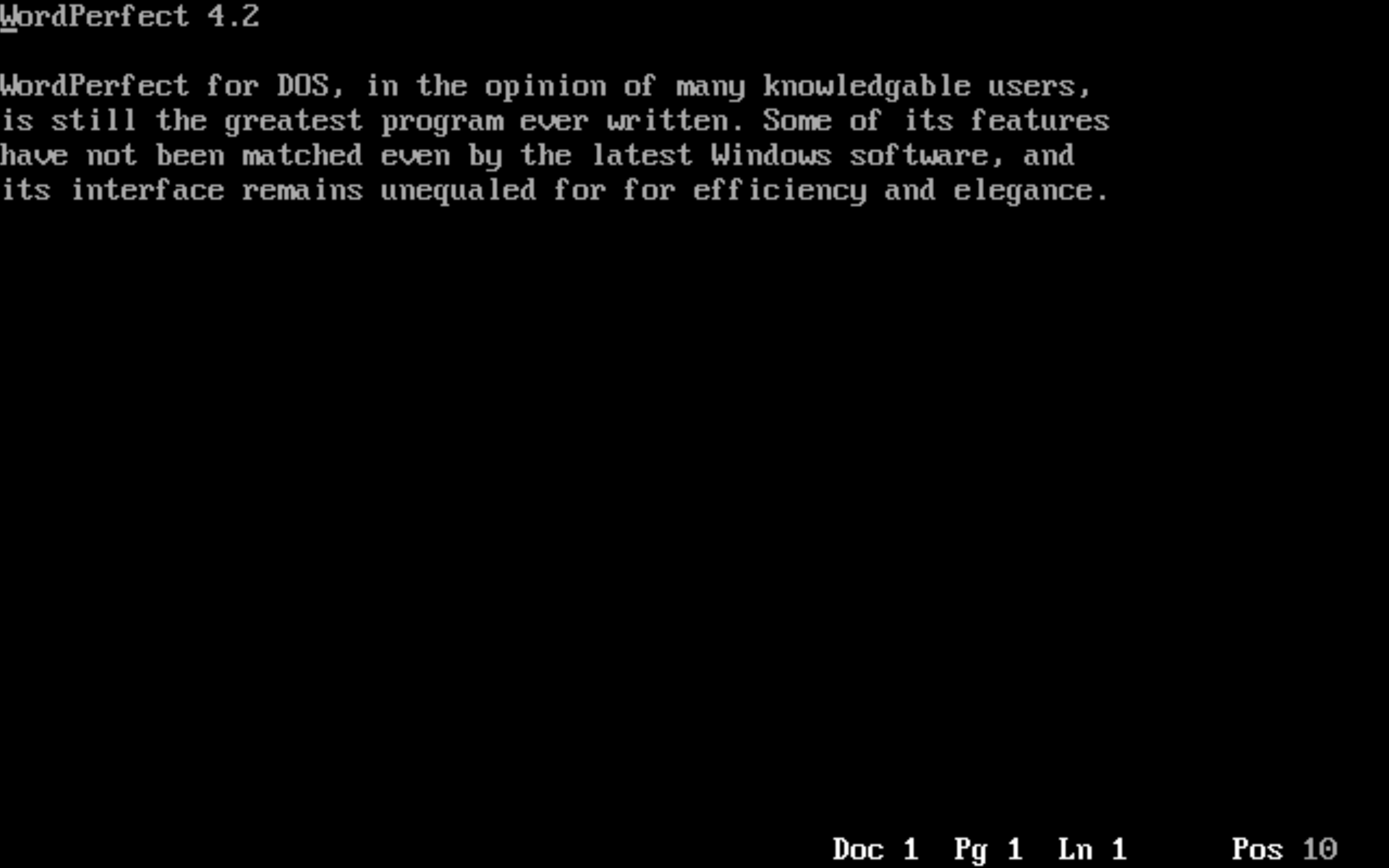W.E. Peterson: Almost perfect
April 25, 2024

| Title | Almost Perfect |
| Author | W.E. Pete Peterson |
| Published | Prima Lifestyles (1993) |
Almost Perfect is a fascinating autobiographical tale about the rise and fall of the WordPerfect Corporation from the point of view of one of the board members. Petersen recounts how they initially built their word processor for Data General machines, then expanded to MS-DOS, the platform that would bring them their greatest success. Despite fierce competition from WordStar and later MS Word, they managed to become the market leader from version 4.0 onward, thanks to much greater functionality such as line numbers (important for lawyers) columns and footnotes that could continue on the next page. Despite this success, they continued to expand to other platforms such as Wang, Atari, and Amiga. During the rise of the GUIs, WordPerfect Corporation initially bet on the wrong horse, namely IBM’s OS/2. This wishful thinking was motivated by the concerns that expanding to MS Windows meant playing on the competitor’s platform. Peterson does not mention that this was also the case with MS-DOS.
One look at Word, however, erased all our worries. The product was no more innovative than its name. Microsoft had designed Word to work like its spreadsheet, Multiplan. It was clumsy to use, and came with no new or interesting features.

WordPerfect was the best word processor from the second half of the eighties. Everyone who went to school or to work in that period knew about it, and many worked with it. I wrote book reports, essays and other documents using primarily version 4.2 and later 5.1. What was so good about WordPerfect was that, apart from a few indicators in the lower-right corner, it was just you and your document. No rulers, ribbons, or pull down menu’s taking up space and brain energy while doing nothing. And because MS-DOS was a non-multitasking OS, nothing else demanded attention either. You were set up perfectly for productivity.
Peterson pits WordPerfect Corporation against Microsoft. Where the former is driven by selling and supporting the best possible product, the latter is driven by a desire for money and power. The secret behind WordPerfect’s success is its flat company structure. He imagines a company with only directors, advisors and managers. The directors set the direction, the advisors from the layer below and facilitate the managers who do the work.
I hoped for our sake that Excel was merely an accident.
Peterson occasionally discusses the many problems he has internally, despite his hard work and good intentions. The reader must see for himself how unpopular he is when seemingly a single disagreement makes the other two members of the board decide to throw him out. Employees are celebrating in the offices, and later Peterson receives an anonymous hate letter at home from an employee he never knew. Peterson just thinks it’s abnormal that this employee is using their employer’s time and resources to send him that letter.
We still seemed determined to try to release as many unsuccessful products as possible
The book concludes with a short piece about the decline of WordPerfect. First it is bought by Novell and later by Corel, for a fraction of the price it once was. Peterson expresses the hope that the reader learns from his biggest mistake, not taking enough time to convey his ideas about business to those around him.













